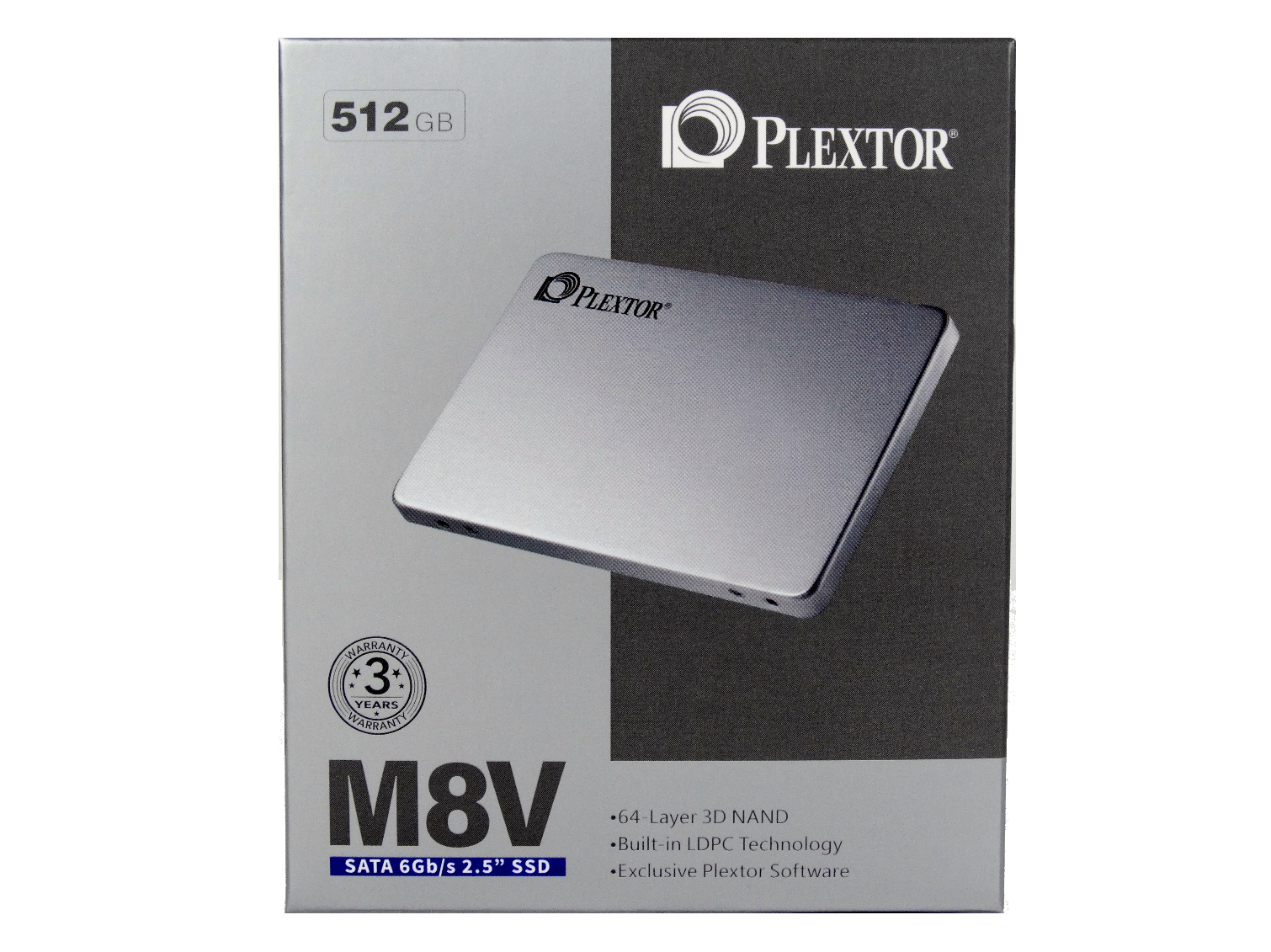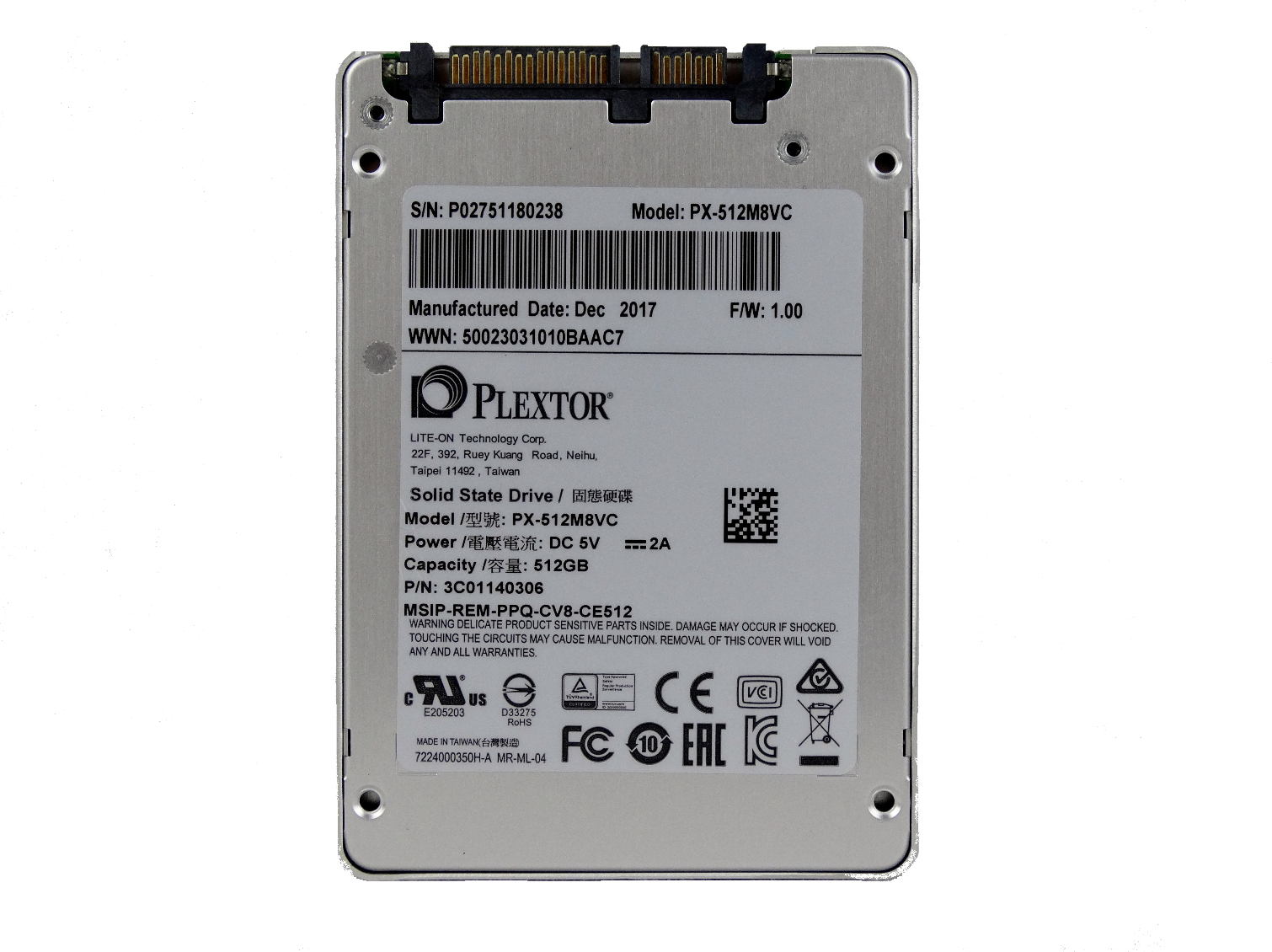Early Verdict
Plextor has a long line of value-class consumer SSDs, but it always seems to forget to price them accordingly. The other models came to market with 850 EVO pricing, and the version we tested today has the same price as the 500GB 860 EVO. If the price was in line with the name we could recommend this model for casual users, but you might as well get the best for the same price. The M8V doesn't hold that title.
Pros
- +
Mainstream SSD performance with a value title
- +
Good recovery performance after a heavy workload
- +
Stronger office workload latency than the MX500
- +
Great software if you use it
Cons
- -
Priced at Samsung 860 EVO levels
- -
Poor notebook battery life performance
- -
Not much of a value
Why you can trust Tom's Hardware
Features & Specifications
The M8V is Plextor's new value-driven SATA SSD that takes advantage of the latest in flash technology. Strong performance drives the SATA upgrade market, but soft pricing moves the products off the shelf. Today we see if Plextor's latest low-cost entry reaches the critical balance.
Armed with Toshiba's new BiCS3 flash, Plextor has begun the process of rebuilding its entire product stack. The flagship M9Pe NVMe SSD was the first step: it delivered exceptional performance and took the fight to Samsung. Today, Plextor moves to the entry-level market where price-conscious shoppers seek out the best value.
Historically, Plextor has had a weak position in the low-cost segment. The company still bills itself as a premium provider based on products it released two decades ago, but the Plextor name is less esteemed if you're not familiar with bit-for-bit copying from optical disks. Even those of us that still own iconic models like the 12/10/32A and imported rare Premium 2 drives from Japan have to wonder if Plextor lost some of the magic along the way. If you are not familiar with those ancient Wide SCSI predecessors, then the Plextor name doesn't hold anything meaningful to you.
Plextor's SSDs do have a reputation for low failure rates, but only if you follow the storage industry closely. Every Plextor SSD goes through a robust screening process that includes extended burn-in time that detects SSDs that are, or could be, defective. Plextor carries that same process over to the value models. The process is expensive and leads to higher prices, though. That makes it difficult for Plextor to deliver a true value-focused product with a low price.
Specifications
The M8V series comes to market in three capacities ranging from 128GB to 512GB. The official name for the SATA products is M8VC. Plextor will release an M.2 2280 form factor under the M8VG SKU, but both fall under the M8V family.
Other than the obvious form factor changes, the two products are functionally identical. Plextor uses the SMI SM2258 controller, which is the same controller Micron uses in the Crucial MX500 and other recently released products. Plextor consumes a lot of Toshiba flash, so it doesn't surprise us that it is one of the first third-party companies manufacturing products with the new 64-layer 3D NAND.
The M8V offers up to 560/520 MB/s of sequential read/write throughput with the largest model. As the table shows, write speeds decline with the smaller models. The random performance is lower than we normally see with tier 2 products. Random read/write performance tops out at 82,000/81,000 IOPS for the 512GB model, but both metrics decline with the smaller models.
Get Tom's Hardware's best news and in-depth reviews, straight to your inbox.
Features
We've reached a point where there is very little innovation with new SATA SSDs. Yes, Plextor offers features such as PlexNytro, but that's just a marketing term for the SLC cache that comes with every modern SSD. The SM2258 controller has special features as well, such as low-density parity check (LDPC) error correction, but you can also find that on nearly every new SSD.
The controller is a commodity part designed to deliver entry-level to mainstream performance at a low price point. The SM2258 is a four-channel controller that supports up to 2TB of NAND capacity and 2GB of DRAM.
The M8V wields Toshiba's BiCS3 flash in conjunction with the SM2258 controller. It's rare to see an SMI controller paired with Toshiba flash. Intel and Crucial/Micron use SMI controllers for a handful of SSDs so most of the development work, it seems, is dedicated to IMFT 3D flash.
Pricing, Warranty, And Endurance
| Product / Capacity | Plextor M8V (3 Yrs) | Crucial MX500 (5 Yrs) | Samsung 860 EVO (5 Yrs) | WD Blue 3D (3 Yrs) |
| 128GB | $64.00 (70 TBW) | X | X | X |
| 256GB | $89.99 (140 TBW) | $79.99 (100 TBW) | $94.99 (150 TBW) | $79.99 (100 TBW) |
| 512GB | $149.99 (280 TBW) | $134.99 (180 TBW) | $149.99 (300 TBW) | $134.99 (200 TBW) |
The Plextor M8V comes to market at $64, $90, and $150. Most companies opt to skip the 128GB class this round, and instead focus on introducing new larger models. Plextor kept the 128GB class and omitted a 1TB drive. Crucial and WD/SanDisk have products at low price points and the latest Samsung SATA SSD sets the cap for a reasonably priced product. The 256GB M8V falls in the middle, but the 512GB model we're testing matches the 860 EVO at $150. We would call this position optimistic at best, but there are other factors to consider.
The M8V carries a three-year warranty with 70 TBW of endurance for every 128GB of flash. That's more endurance than the MX500 and Blue 3D, but it comes up short compared to the 860 EVO and its five-year warranty.
Software
Plextor has a robust software package that includes many unique features. Most of the software only works with the company's SATA products and not the PCIe and NVMe models.
PlexVault
Plextor designed its PlexVault software to provide a secure storage space that gives you complete control of access privileges. Even if you are using a computer with others, you can still hide your private data safely and securely on the computer inside the PlexVault if you have a Plextor SSD.
PlexCompressor
SSD capacity is always a key point of consideration. Plextor's PlexCompressor utilizes custom smart compression technology that gives you more storage capacity without impacting your experience or system performance.
Packaging


The M8V brings a new look from previous products. The front of the box has a stylish background in contrasting colors. We found performance and warranty information for each capacity on the back, as well as general information about the series.
A Closer Look




The M8V has the same brushed aluminum case the company has used for several years.
Internals




Plextor followed other companies and used a smaller circuit board to reduce costs. The SMI SM2258 controller has been on the market for over a year, so it's nothing new. This is the first time we've seen Toshiba's new 64-layer flash in a TSOP package (the electrical leads on the outside edge). Older Toshiba TSOP packages used a single plane to address the flash inside instead of two planes with a BGA package. That may be why the M8V has less random performance than other new products with the latest generation 64-layer NAND.
MORE: Best SSDs
MORE: How We Test HDDs And SSDs
MORE: All SSD Content

Chris Ramseyer was a senior contributing editor for Tom's Hardware. He tested and reviewed consumer storage.
-
Sakkura It has to be a bit frustrating to write a review whose entire conclusion could change at the drop of a hat... err, a price.Reply -
nibb0r 128 GB -> 119.2 GiBReply
256 GB -> 238.4 GiB
512 GB -> 476.8 GiB
These are just calculations. Please correct me if the actual drive capacities are different. -
derekullo As soon as I read the 70% Mixed Random WorkloadReply
This immediately started playing
https://www.youtube.com/watch?v=tKdcjJoXeEY -
littleleo Plextor has always positioned itself as a high quality/price product line. I remember when they were called TEXEL and were competing with Toshiba for the fastest CD-ROM. They never sold on price always quality and performance. Their quality maybe good but their performance doesn't really standout to justify the higher price in this product segment. They don't have the same advantages as they did from making CD-ROMs with SSDs.Reply -
Loadedaxe Drop it $15 and it might be worth a look. Crucial and Samsung are much better value.Reply
